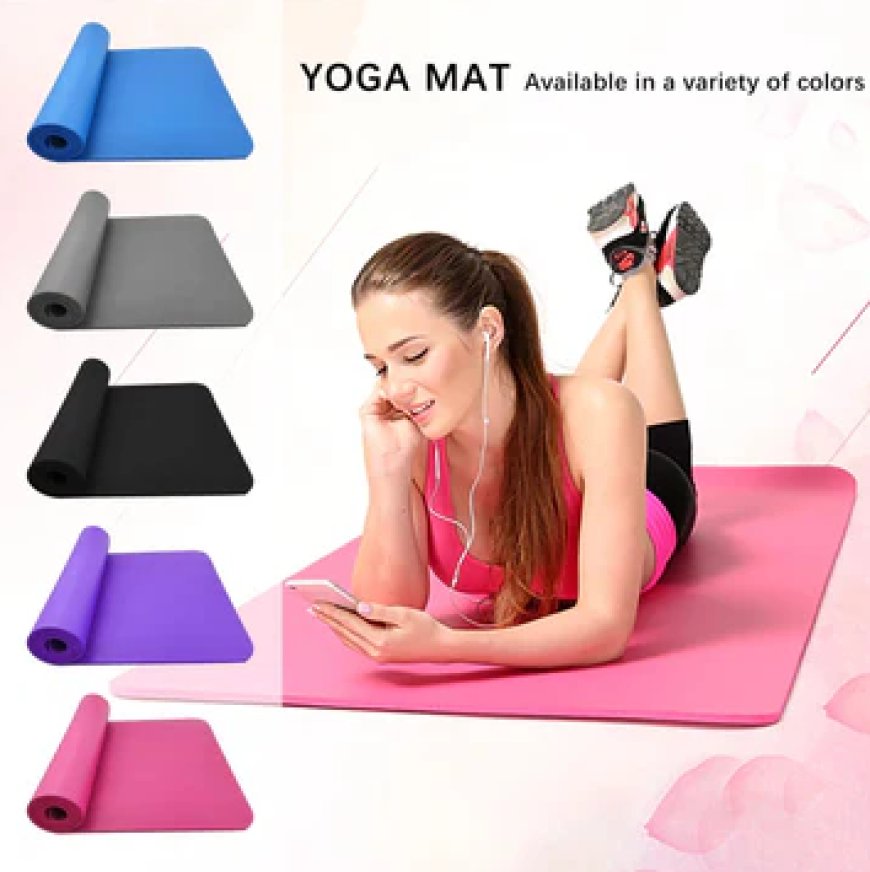Yoga Fitness Mats: Comparing Materials, Thickness, and Grip for Optimal Performance

Are you ready to elevate your yoga practice? The right yoga mat can make all the difference between a mediocre session and an invigorating experience. With so many options available, it’s easy to feel overwhelmed when choosing the perfect mat for your needs.
Whether you're a seasoned yogi or just starting out, finding a mat that offers comfort and support is essential. In this ultimate guide, we’ll explore everything you need to know about selecting the ideal yoga fitness mat—from key features to care tips—so you can focus on what truly matters: enhancing your flow and connecting with your breath. Let's dive in!
What is a Yoga Fitness Mat?
A yoga fitness mat is more than just a piece of equipment; it’s your personal space for practice. Designed specifically for yoga, these mats provide the necessary grip and cushioning to support various poses.
Typically made from materials like PVC, TPE, or natural rubber, they offer durability and comfort. The right mat helps prevent injuries by providing stability during challenging postures.
Yoga mats come in different thicknesses and textures to cater to individual preferences. Some are designed for specific styles of yoga, whether you’re flowing through vinyasa or holding steady in yin.
Having a dedicated mat also creates a sense of ritual around your practice. It becomes an essential tool that invites mindfulness and focus into each session. Whether at home or in a studio, your yoga mat is where transformation begins.
Key Features to Look in Yoga Fitness Mat
When selecting a yoga fitness mat, certain features can significantly enhance your practice. Here are the key attributes to look for:
- Thickness: A thicker mat provides extra cushioning. This is crucial for joint support during poses.
- Material: Natural rubber or eco-friendly materials offer superior grip and durability. They also promote an environmentally-conscious choice.
- Texture: A textured surface helps prevent slipping, ensuring stability in both standing and seated positions.
- Size: Mats come in various lengths and widths. Choose one that fits your body size and preferred practice space.
- Weight: Consider how portable you need your mat to be. Lighter mats are easier to carry but may sacrifice some cushioning.
These features contribute directly to comfort and performance during workouts, making them essential considerations when choosing a mat tailored to your needs.
Why is it Important to Choose the Right Mat?
Choosing the right yoga mat is essential for a fulfilling practice. The mat serves as your personal space, providing stability and comfort during each pose.
A good quality mat enhances grip. This prevents slips during challenging poses, allowing you to focus on your breath rather than worrying about falling.
The thickness of the mat plays a crucial role too. A thicker mat offers cushioning for sensitive joints. This makes it easier to hold postures longer without discomfort.
Additionally, different materials can impact your experience. Eco-friendly options are available for those who prioritize sustainability in their lifestyle choices.
An aesthetically pleasing design can elevate your mood and motivate you to roll out the mat more often. Your yoga journey is unique; having the right tools sets a positive tone from the very beginning of every session.
Choosing the Right Yoga Fitness Mat for Your Needs
Finding the right yoga fitness mat is personal. Everyone has unique needs and preferences that can significantly enhance their practice.
Consider your style of yoga first. If you love hot yoga, look for mats with moisture-wicking properties. For restorative sessions, a thicker mat might provide comfort and support.
Next, think about portability. Are you commuting to classes or practicing at home? Lightweight mats are ideal for on-the-go yogis, while more substantial options may offer stability at home.
Texture matters too; some prefer a smooth surface for ease of movement, while others want grip to prevent slipping during challenging poses.
Reflect on your budget. Quality varies widely in price ranges but investing in a durable mat often pays off over time as it withstands wear and tear better than cheaper alternatives.
Caring for Your Yoga Mat: Tips and Tricks
Caring for your yoga mat is essential to maintain its longevity and hygiene. After each practice, give it a quick wipe down with a damp cloth. This helps remove sweat and dirt that can accumulate over time.
For deeper cleaning, use a gentle soap solution or vinegar mixed with water. Spray lightly on the surface and wipe clean. Avoid soaking; excess moisture can damage the material.
Store your mat rolled up in a cool, dry place away from direct sunlight. Sun exposure can degrade the material and lead to fading.
If you notice any slips during practice, sprinkle some baking soda on the mat before wiping it clean. It acts as a natural deodorizer while helping restore grip.
Regular maintenance not only enhances performance but also ensures that your yoga space remains inviting and fresh for each session.
Conclusion
Choosing the right yoga fitness mat is a personal journey. It can significantly enhance your practice, providing comfort and stability as you flow through each pose. The right mat supports your needs while encouraging growth in your practice.
Always remember to consider factors like material, thickness, texture, and portability when selecting a mat that aligns with both your style and preferences. Each practice is unique—what works for one person may not work for another.
Caring for your yoga mat ensures its longevity. With proper maintenance, you'll enjoy many sessions on a clean and supportive surface.
As you embark on this journey of finding the perfect yoga fitness mat, trust yourself to make choices that resonate with you. Your path to mindfulness begins underfoot; choose wisely and embrace every moment on the mat.

 canadianwordle
canadianwordle